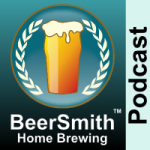Stone & Wood’s latest limited release is the Peachy Cheeks Peach Bellini Sour.
The post Life’s peachy with Counter Culture’s new release appeared first on Beer & Brewer.
Stone & Wood’s latest limited release is the Peachy Cheeks Peach Bellini Sour.
The post Life’s peachy with Counter Culture’s new release appeared first on Beer & Brewer.
Bright revamp their Mash Club – one of the country’s oldest subscription models.
The post Beer club helps brewery look on the Bright side appeared first on Beer & Brewer.
Sydney brewery release Azacca – the latest in their series of single hop IPAs.
The post Akasha continue their worship of hops appeared first on Beer & Brewer.
Tasmania’s Van Dieman Brewing is holding its annual hop picking day this Saturday.
The post Get a hands on approach to making beer appeared first on Beer & Brewer.
All female brew team to create Milkshake IPA inspired by art exhibition.
The post Capital brew International Women’s Day beer appeared first on Beer & Brewer.
Sydney Brewery’s Pilsner wins best in show at Queensland’s top beer awards.
The post The secret to the success of the quiet achievers appeared first on Beer & Brewer.
Frenchies Bistro & Brewery release three new IPAs plus we revisit some old favourites.
The post French flair for the classics and the contemporary appeared first on Beer & Brewer.
 Dr Charlie Bamforth joins me this week to discuss foam and head retention in beer. Subscribe on iTunes to Audio version or Video version or Spotify or Google Play Download the MP3 File– Right Click and Save As to download this mp3 file. Your browser does not support the audio element. Topics in This Week’s […]
Dr Charlie Bamforth joins me this week to discuss foam and head retention in beer. Subscribe on iTunes to Audio version or Video version or Spotify or Google Play Download the MP3 File– Right Click and Save As to download this mp3 file. Your browser does not support the audio element. Topics in This Week’s […] Sydney brewery’s expansion includes new tanks, canning line and dedicated barrel room.
The post Wayward to increase capacity by 25 per cent appeared first on Beer & Brewer.
New Zealand-Style Pale Ale and India Pale Ale added to BA’s style guidelines.
The post New Zealand Pale Ales added to style guide appeared first on Beer & Brewer.
New Kiwi hop receives its highest profile Australian release since being officially named.
The post Nectaron’s nectar shines in 4 Pines release appeared first on Beer & Brewer.
 Mathias Siebler, a 10th generation German hop farmer, joins me this week from Bavaria to discuss growing hops. Subscribe on iTunes to Audio version or Video version or Spotify or Google Play Download the MP3 File– Right Click and Save As to download this mp3 file. Your browser does not support the audio element. Topics […]
Mathias Siebler, a 10th generation German hop farmer, joins me this week from Bavaria to discuss growing hops. Subscribe on iTunes to Audio version or Video version or Spotify or Google Play Download the MP3 File– Right Click and Save As to download this mp3 file. Your browser does not support the audio element. Topics […] Sales of adjunct-laden, higher alcohol sweeter beers have boomed in Australia.
The post Go big and stay home: the rise of the dessert beer appeared first on Beer & Brewer.
Go behind the Counter Culture series with their head brewer and innovation manager.
The post Stone & Wood’s 10 week cycle of ‘fresh air’ appeared first on Beer & Brewer.
Feral’s new Shooter’s Juicy IPA is shaping up as their biggest limited release ever.
The post Feral Brewing’s Shooter’s Juicy IPA is here! appeared first on Beer & Brewer.
Brewery release hoppiest canned beer to date in tribute to installing solar panels.
The post Colonial Brewing make beer from sunshine appeared first on Beer & Brewer.
Celebrate Winter Bonfire Bash Series, Lumberjack Competition, Frying Pan Toss, Return of Husky Hamburger, Flapjacks & Flannel and Much More Highlight 2021 Winter Events Central Virginia’s Stable Craft Brewing at Hermitage Hill, an authentic working farm brewery and winery, is pleased to announce its 2021 January through March special event schedule. Saturday’s will come alive […]
The post Stable Craft Brewing At Hermitage Hill Announces 2021 January – March, 2021 Special Events appeared first on CraftBeer.com.
Brewpubs boost flavor on their menus by pouring their beers into the pizza dough and serving up the perfect slice.
The post Beer-infused Pizza Dough is a Perfect Brewpub Pairing appeared first on CraftBeer.com.
These classic Christmas beers from craft breweries pair perfectly whether you’re looking to share a bottle with friends or enjoy as you’re decorating the house for the holidays.
The post 12 Beers of Christmas appeared first on CraftBeer.com.
The holidays are an opportunity to combine your favorite beer styles with your favorite foods. Here is some simple holiday beer pairing advice.
The post Simple Holiday Beer and Food Pairings appeared first on CraftBeer.com.
In August 2020, the federal Food & Drug Administration (FDA) finalized the definition and labeling requirements of gluten-free fermented and hydrolyzed foods (including beer and other alcoholic beverages). The ruling provides a clear delineation between products that are truly gluten-free and products that are not and how product labels communicate those differences to consumers. In […]
The post Gluten-Free Brewers Group Responds to FDA Final Rule on Gluten-Free Claims on Fermented Foods appeared first on CraftBeer.com.
 This week I take a look at methods for doing sensory analysis of hops as well as some of the resources available to understand hop flavor and aroma better. Understanding Hop Flavor and Aroma For a few years now I’ve been doing presentations on beer recipe design where I encourage brewers to get more familiar […]
This week I take a look at methods for doing sensory analysis of hops as well as some of the resources available to understand hop flavor and aroma better. Understanding Hop Flavor and Aroma For a few years now I’ve been doing presentations on beer recipe design where I encourage brewers to get more familiar […] Fall is in the air and that means one thing: harvest season! Brewing with fresh hops is a meticulous process, having to rely on bountiful bines and timing of wet hops plucked, packaged, and shipped overnight via air freight to align with a brew day built around the arrival of those hops and those hops alone…and this […]
The post Virginia Beer Co. Celebrates Harvest Season With Two Wet-Hopped Recipes appeared first on CraftBeer.com.
Introducing: All The Stops – A Virtual Road Trip If 2020 were like any other year, we’d be revving up for ALL THE HOPS, our GABF parking lot can jam extravaganza, where we bring some of the country’s best breweries to Denver for all to enjoy. But this year isn’t like any other. No GABF. […]
The post All The Stops: A Virtual Road Trip appeared first on CraftBeer.com.
 Stan Hieronymus joins me this week to discuss hop breeding programs and some of the new hop varieties hitting the brewing market. Subscribe on iTunes to Audio version or Video version or Spotify or Google Play Download the MP3 File– Right Click and Save As to download this mp3 file. Your browser does not support […]
Stan Hieronymus joins me this week to discuss hop breeding programs and some of the new hop varieties hitting the brewing market. Subscribe on iTunes to Audio version or Video version or Spotify or Google Play Download the MP3 File– Right Click and Save As to download this mp3 file. Your browser does not support […]  Jamil Zainasheff from Heretic Brewing joins me this week for a beer brewing question and answer session. Subscribe on iTunes to Audio version or Video version or Spotify or Google Play Download the MP3 File– Right Click and Save As to download this mp3 file. Your browser does not support the audio element. Topics in […]
Jamil Zainasheff from Heretic Brewing joins me this week for a beer brewing question and answer session. Subscribe on iTunes to Audio version or Video version or Spotify or Google Play Download the MP3 File– Right Click and Save As to download this mp3 file. Your browser does not support the audio element. Topics in […]  Andreas Krennmair joins me this week to discuss his new book on the history of Vienna Lagers. Subscribe on iTunes to Audio version or Video version or Spotify or Google Play Download the MP3 File– Right Click and Save As to download this mp3 file. Your browser does not support the audio element. Topics in […]
Andreas Krennmair joins me this week to discuss his new book on the history of Vienna Lagers. Subscribe on iTunes to Audio version or Video version or Spotify or Google Play Download the MP3 File– Right Click and Save As to download this mp3 file. Your browser does not support the audio element. Topics in […]  Randy Mosher joins me this week to discuss brewing fruity IPAs and using fruit in your IPAs. Subscribe on iTunes to Audio version or Video version or Spotify or Google Play Download the MP3 File– Right Click and Save As to download this mp3 file. Your browser does not support the audio element. Topics in […]
Randy Mosher joins me this week to discuss brewing fruity IPAs and using fruit in your IPAs. Subscribe on iTunes to Audio version or Video version or Spotify or Google Play Download the MP3 File– Right Click and Save As to download this mp3 file. Your browser does not support the audio element. Topics in […]  I recently posted both yeast and hops updates for BeerSmith 3 and BeerSmith 2 to the add-ons server in BeerSmith. These are recommended downloads for BeerSmith users. These add-ons update the core yeast and hops listings to include new yeasts such as Kveik as well as some 63 new hop varieties. To download these updates, […]
I recently posted both yeast and hops updates for BeerSmith 3 and BeerSmith 2 to the add-ons server in BeerSmith. These are recommended downloads for BeerSmith users. These add-ons update the core yeast and hops listings to include new yeasts such as Kveik as well as some 63 new hop varieties. To download these updates, […]  Today I’m going to highlight some of the new dry hop features in BeerSmith 3.1. BeerSmith 3.1 was released in mid-2020. Dry hopping is one of the best ways to preserve aroma oils in your hops. Because it is done at low temperature, you don’t risk boiling off volatile aroma oils. Also the long contact […]
Today I’m going to highlight some of the new dry hop features in BeerSmith 3.1. BeerSmith 3.1 was released in mid-2020. Dry hopping is one of the best ways to preserve aroma oils in your hops. Because it is done at low temperature, you don’t risk boiling off volatile aroma oils. Also the long contact […]